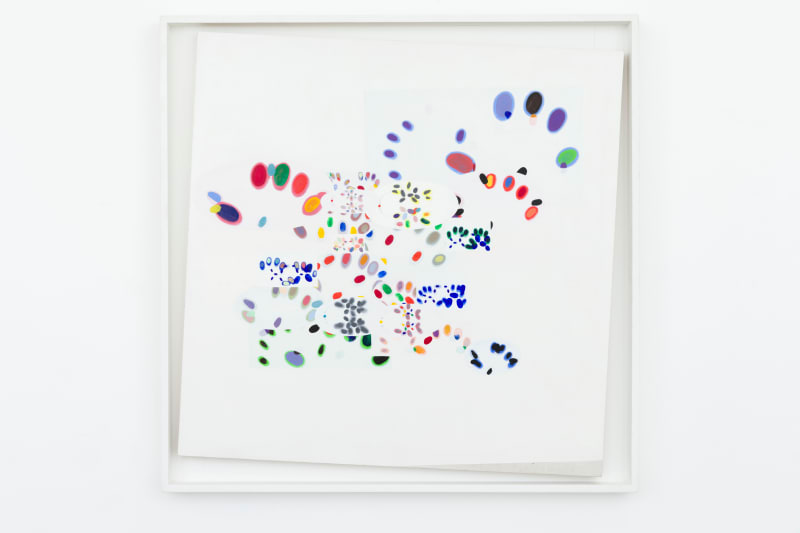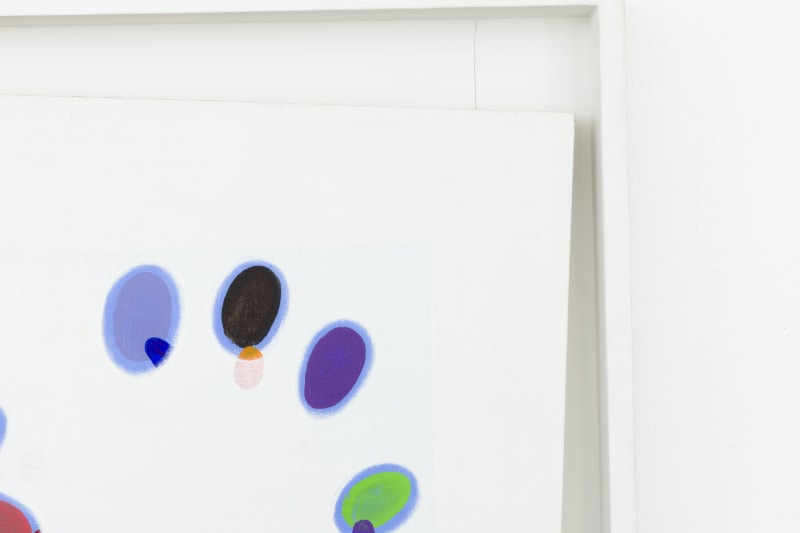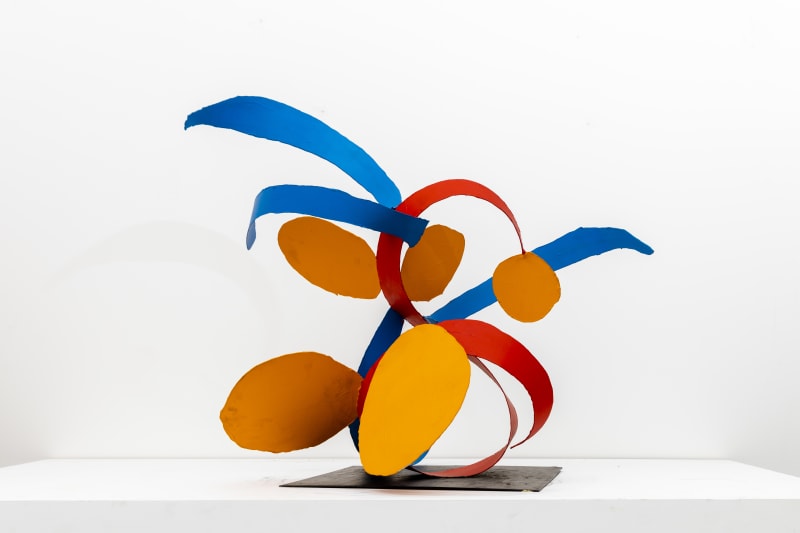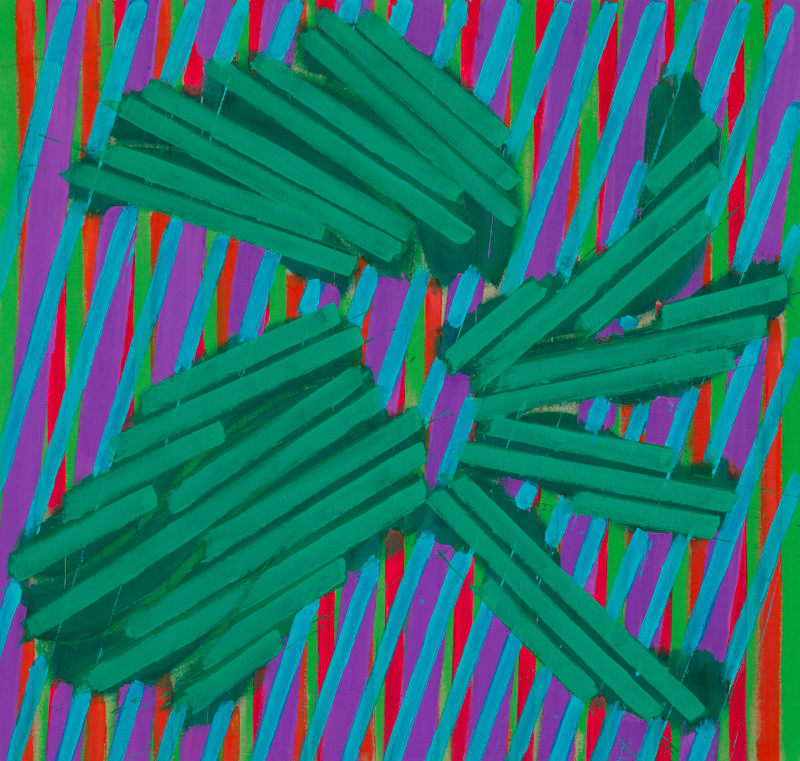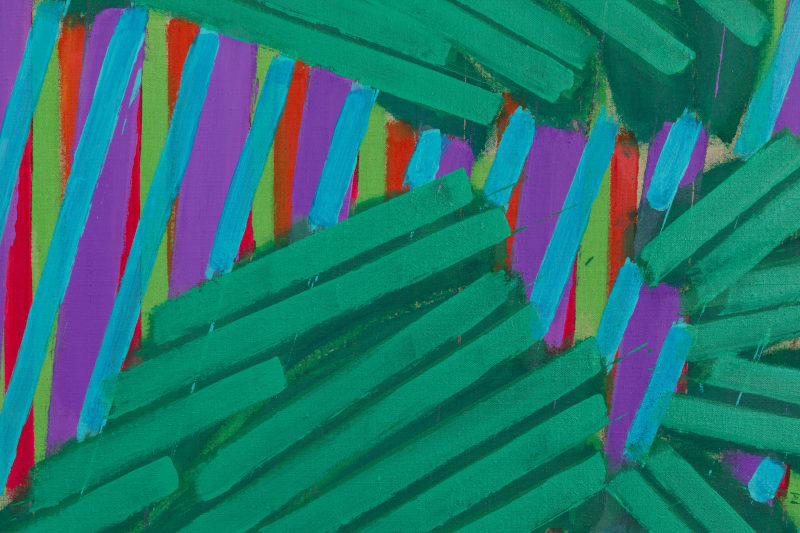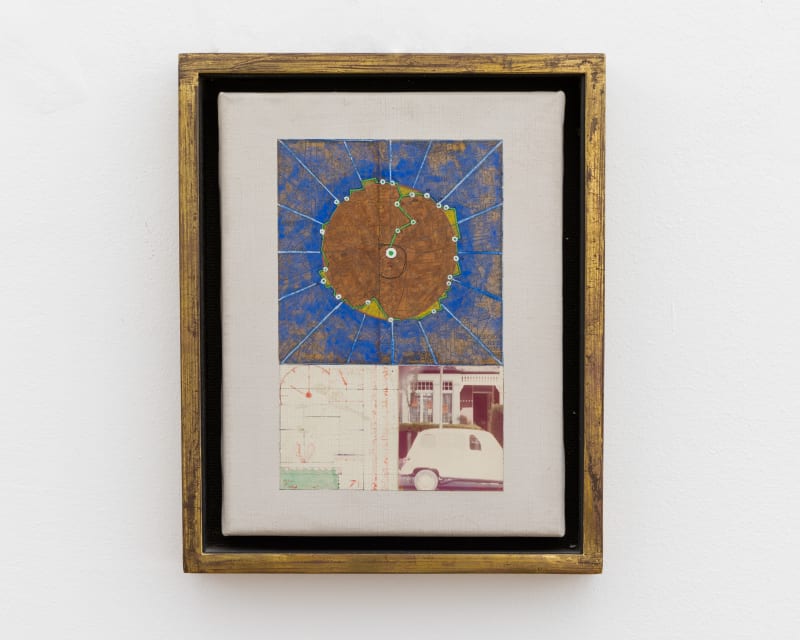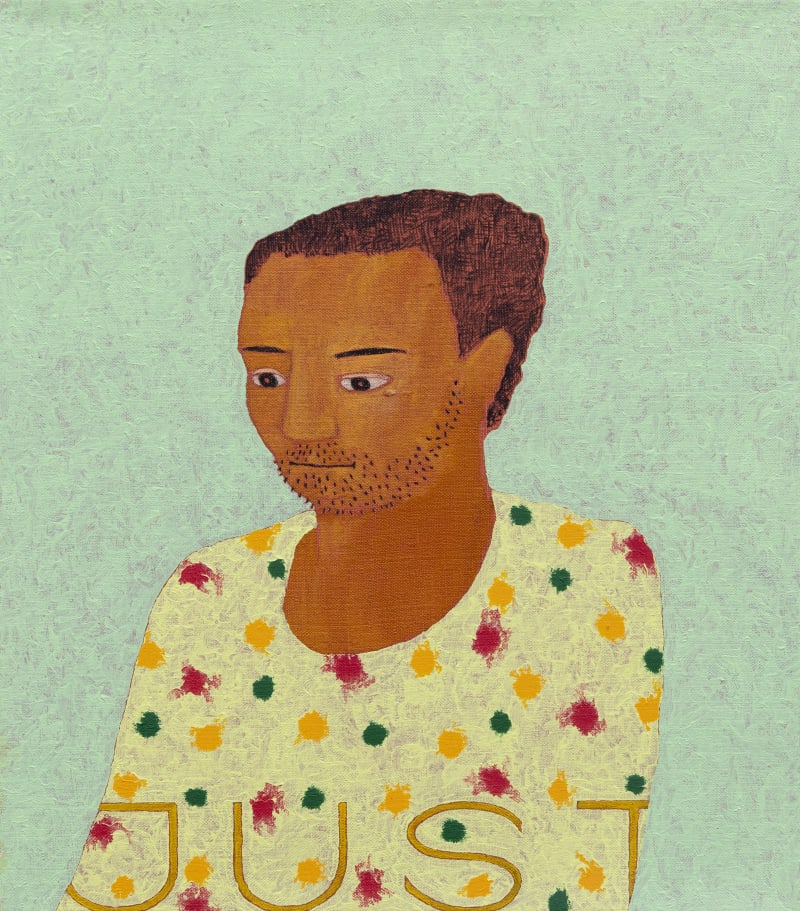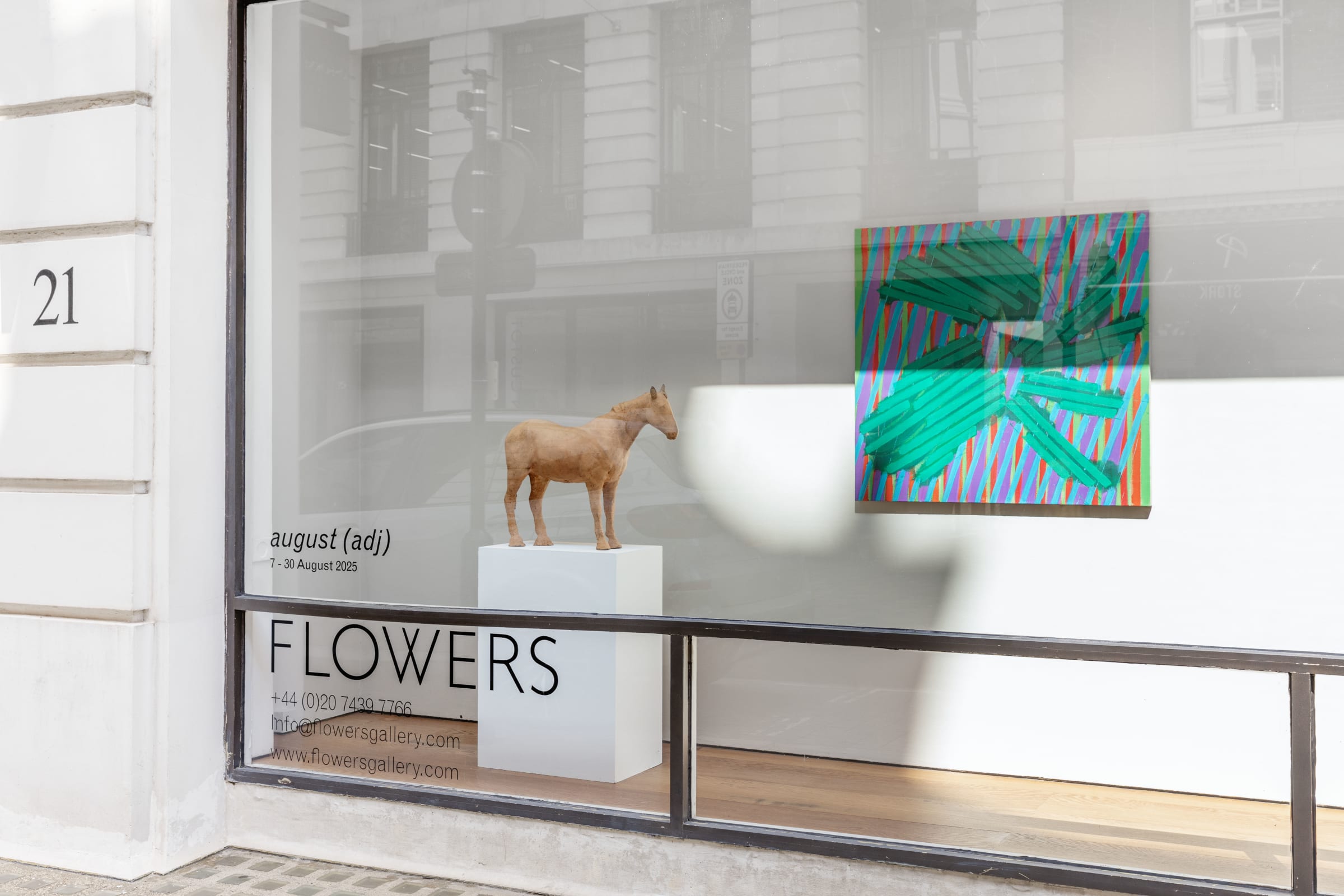
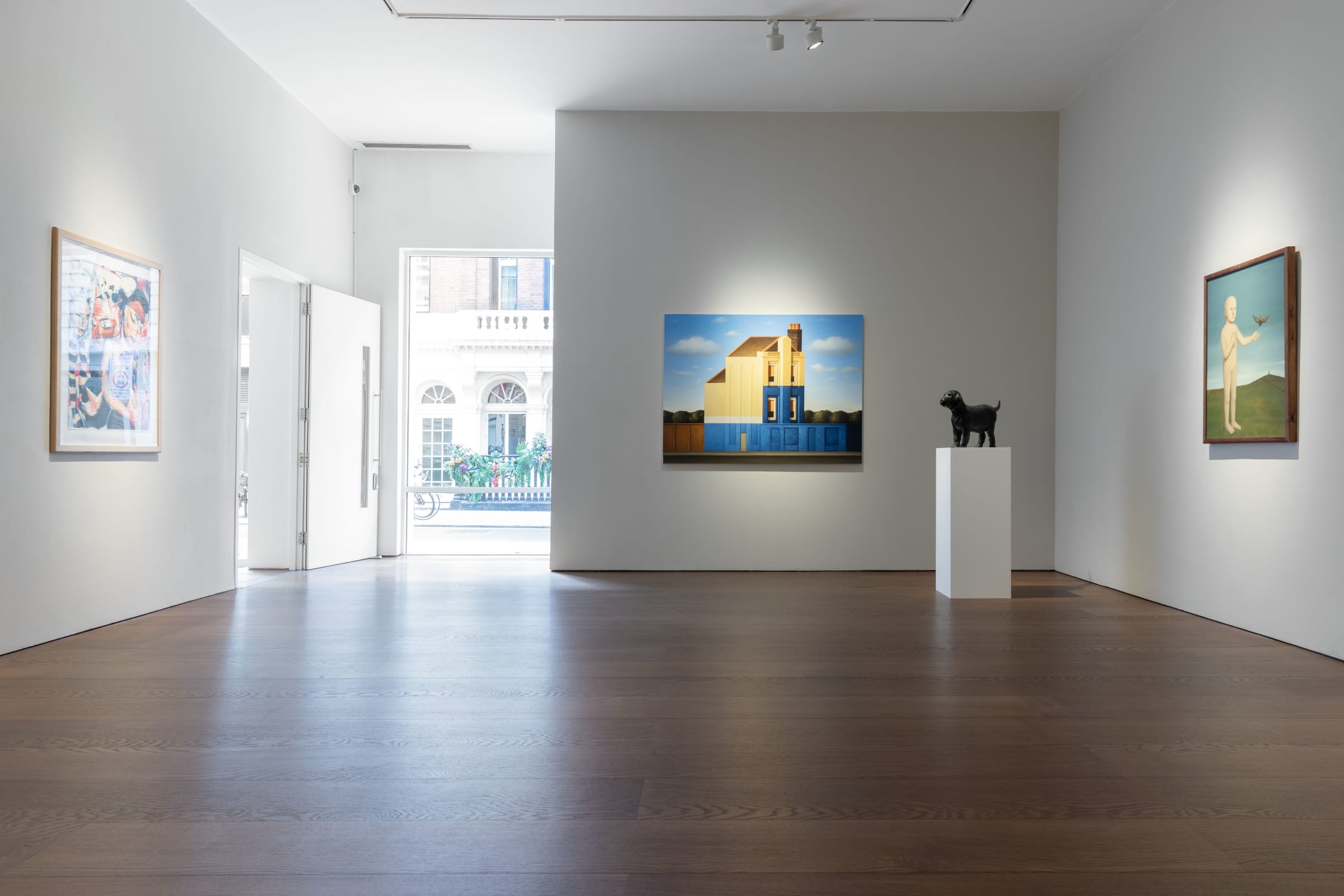
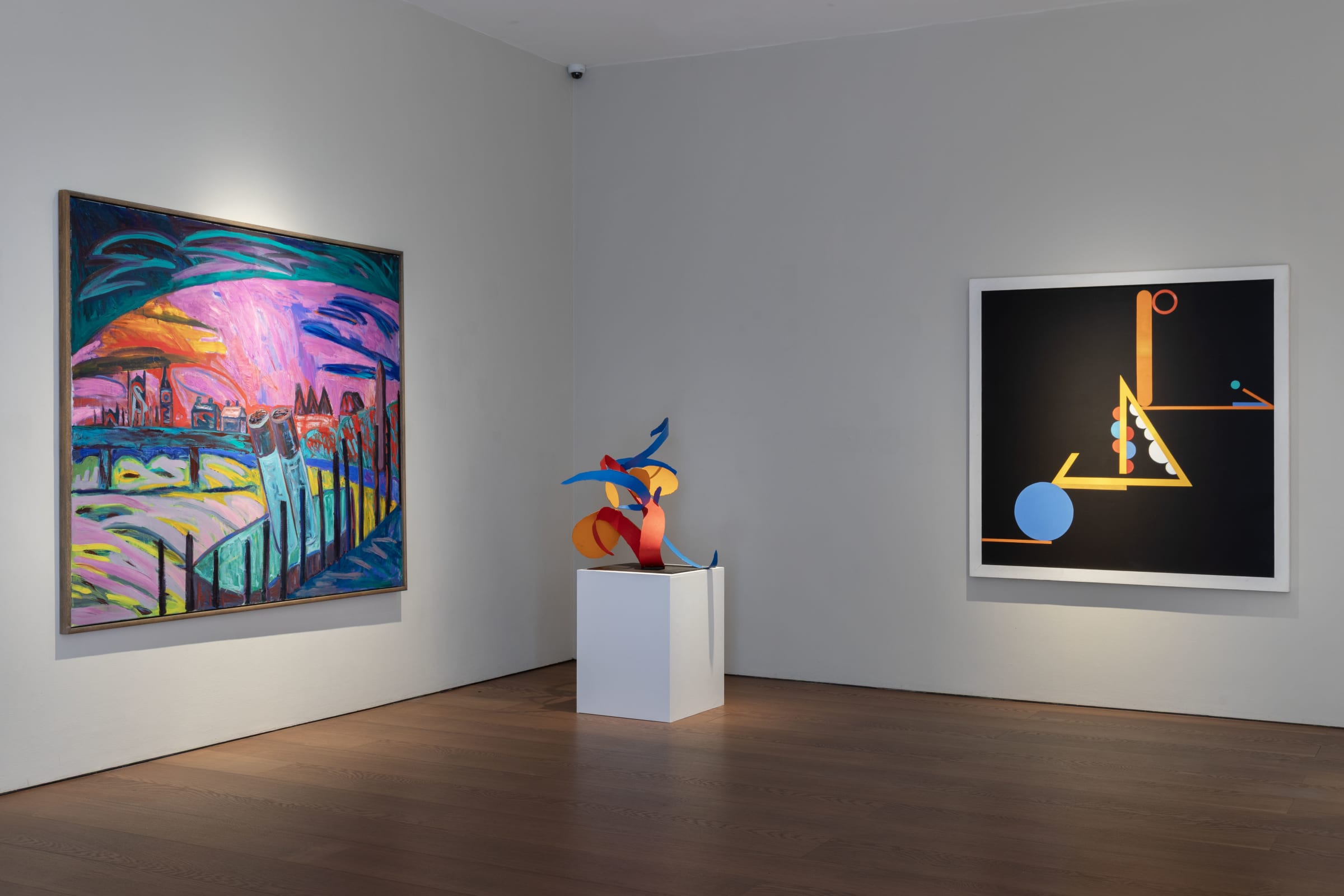
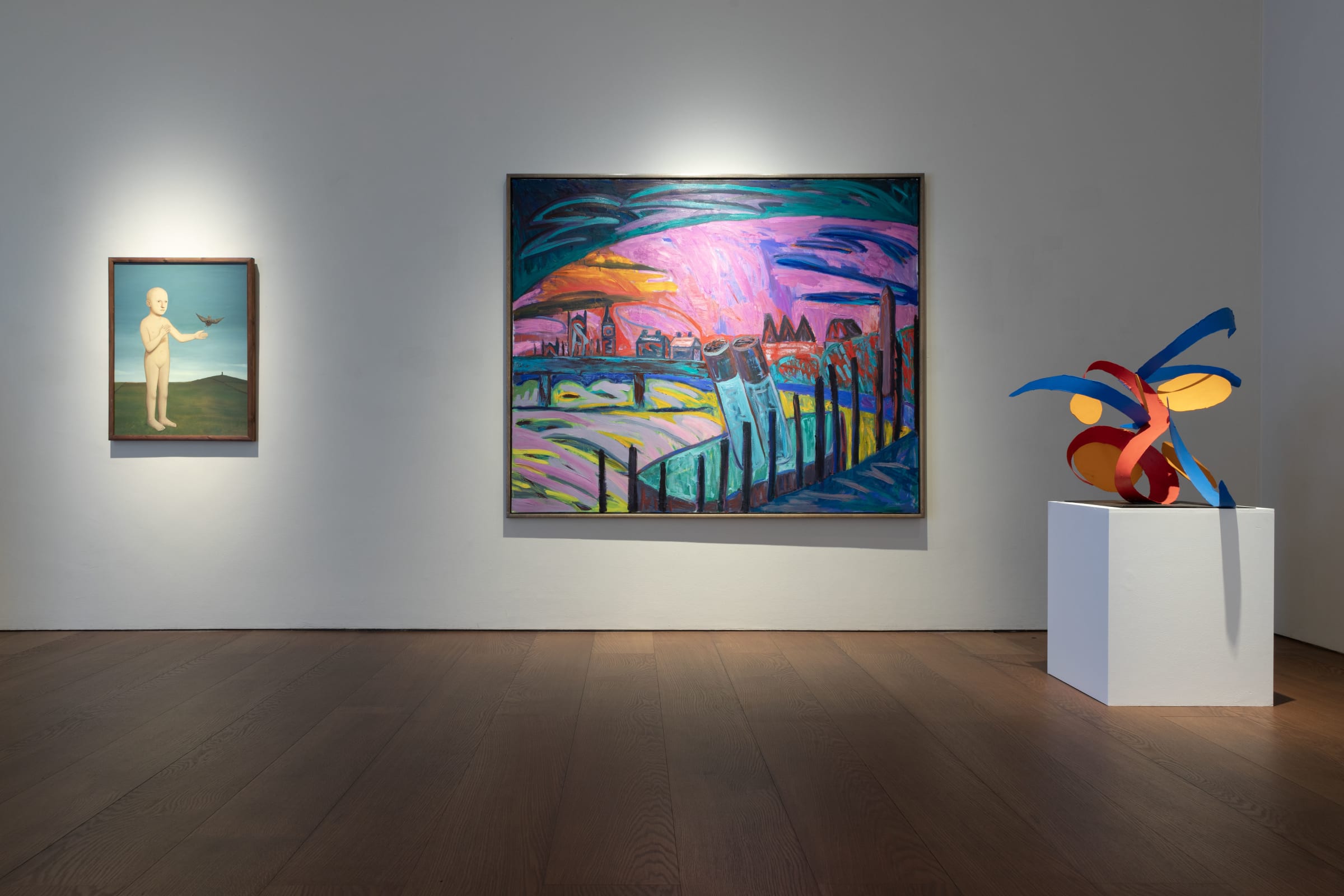
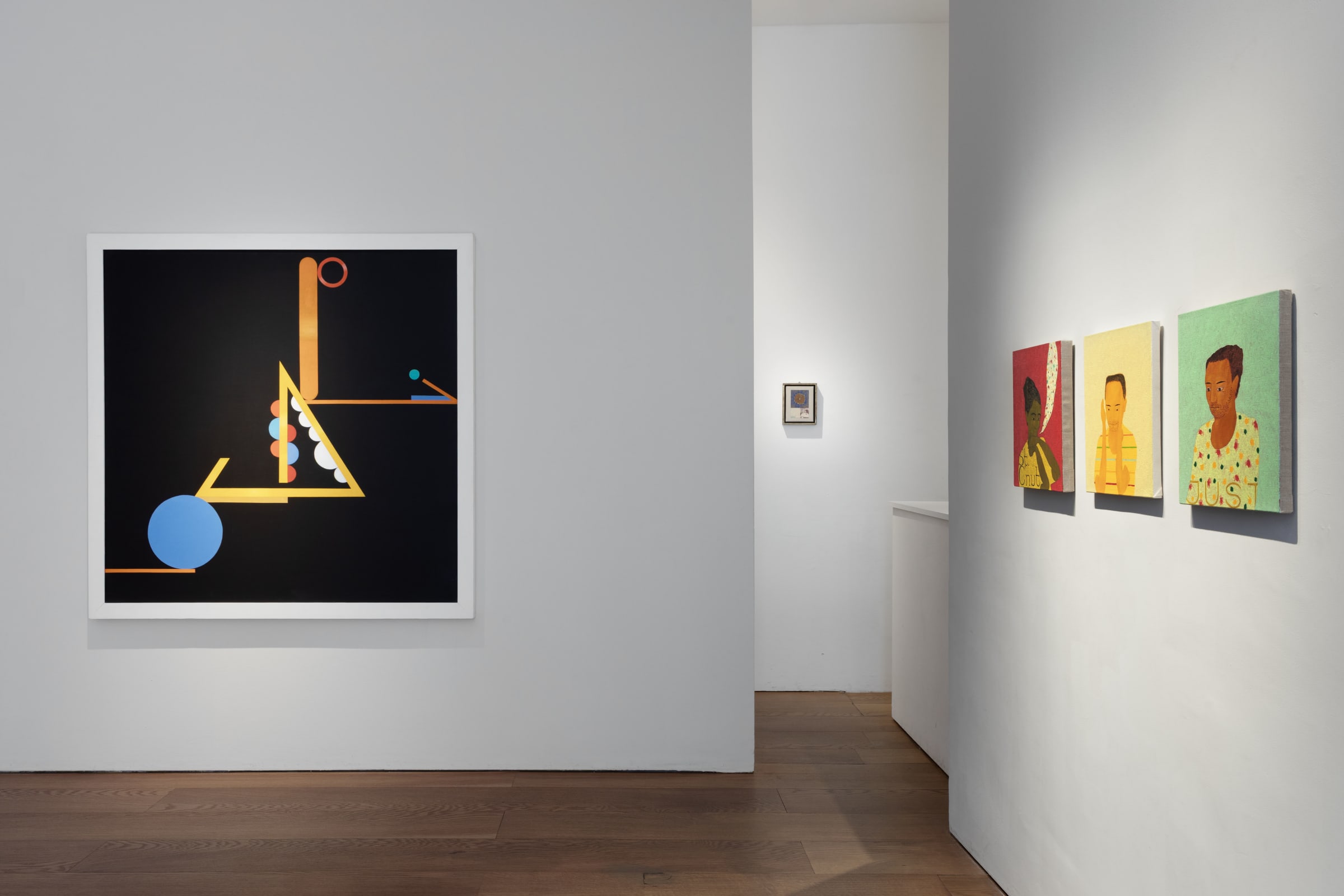
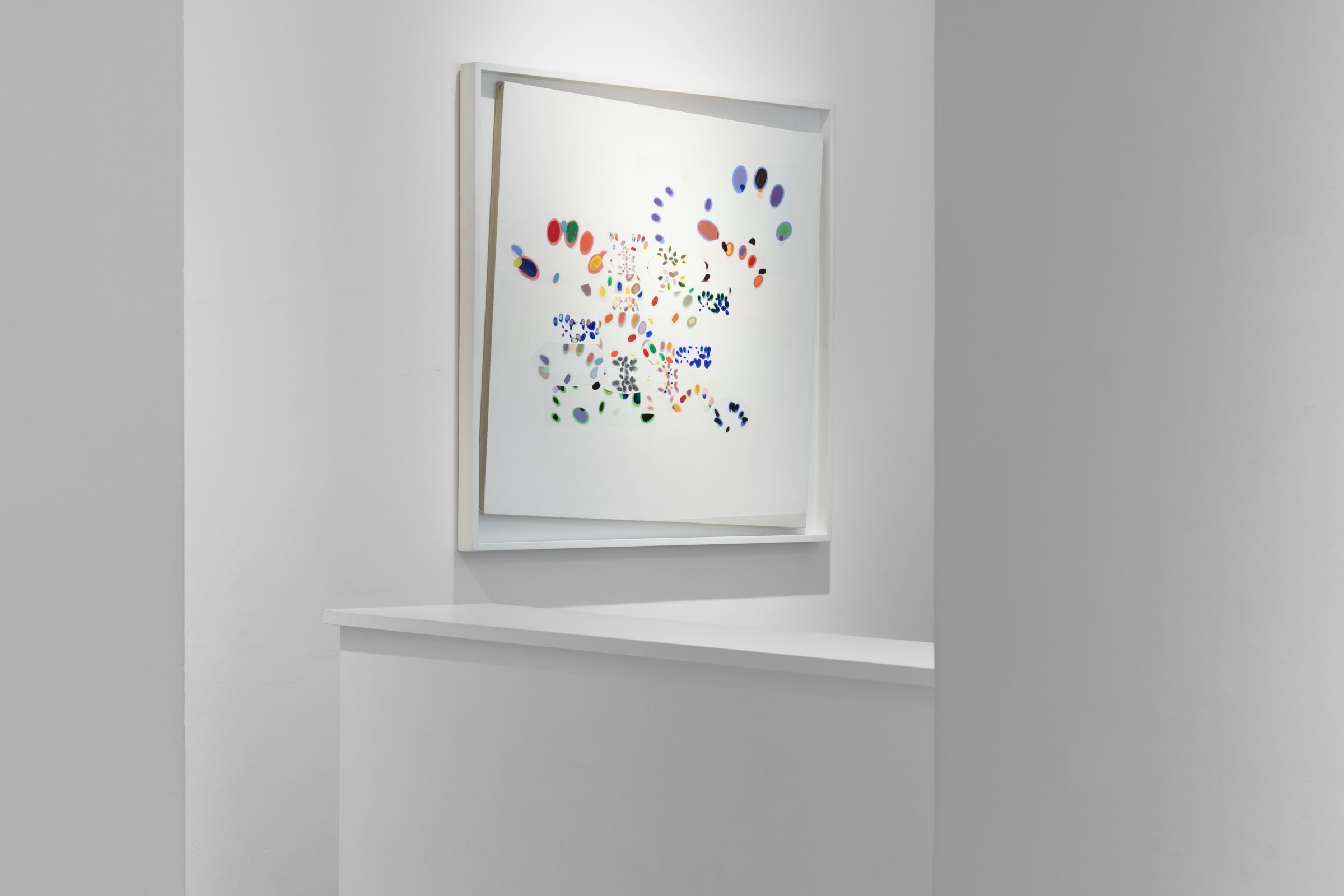
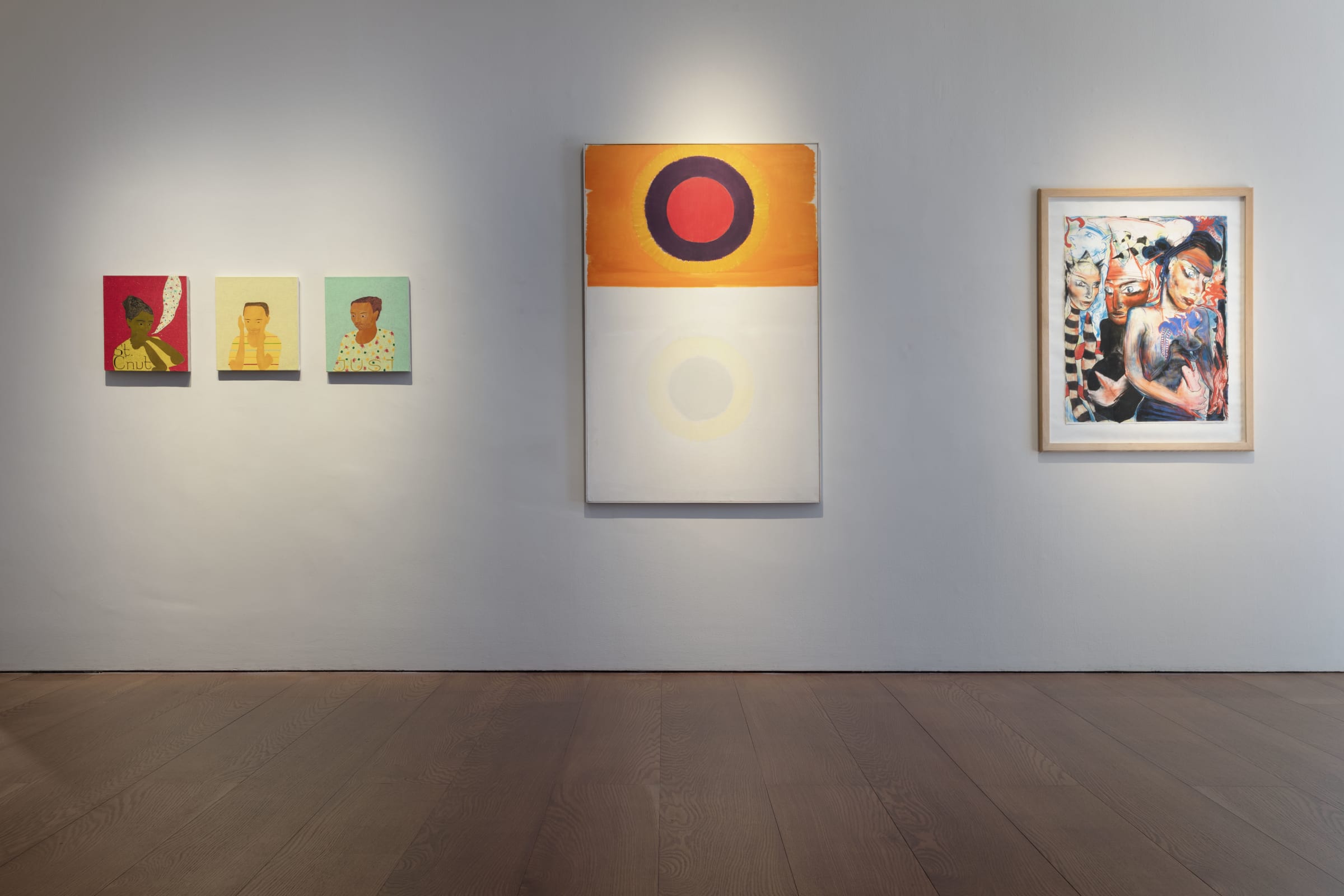
august (adj)
Overview
Flowers Gallery is delighted to present august (adj), a group exhibition bringing together paintings and sculpture made between 1960 and 2009 by artists who have exhibited with the gallery over the past fifty years.
Through the dialogues formed between the artworks, the exhibition explores how artists visualise internal realities, whether emotional, psychological, or social. From Bernard Cohen’s painterly maps of thought to Amanda Faulkner’s layered expressions of identity, and from Jack Smith’s silent musical abstractions to Renny Tait’s dreamlike, geometric structures, each work gives form to the unseen.
Bernard Cohen (b 1933)
Inside Outside (1974) reflects Bernard Cohen’s ongoing exploration of spatial tension and structure as well as his predilection for situating clusters of paint within extremely exposed white canvas, a notable trend of this period for the artist. With small bursts of colour organically growing from the centre of the composition, Cohen referred to his canvases as "a series of diagrams about painting". The recurring motif of the disc obstructs any symbolic inference to be made, affirming the physical process of mark-making by use of a spray gun, with the architectural layers of discs appearing to be embedded into the white space as fragmented pigment deposits.
The painting is hung at a slight vertical tilt within its frame, reminding the viewer that the work is an act of deliberate contrivance, with the angle reflecting the painting’s title, Inside Outside, hinting at a dialogue between enclosure and expansion, recurring themes in Cohen's practice.
Richard Smith (1931-2016)
Richard Smith, CBE was one of the most influential artists of his generation. After studying in the 1950s at the Royal College of Art alongside artists such as Peter Blake and Robyn Denny, Smith stood apart from the burgeoning Pop Art movement of the 1960s by melding the slick and vibrant imagery found in the commercial landscape with an expansive abstract painting language very much his own. He gained critical acclaim for extending the boundaries of painting into three dimensions, creating sculpturally shaped canvases with monumental presence. In his two-dimensional surfaces, Smith uses bold colour to delineate forms, while also employing sculptural strategies such as cuts and folds, creating an organic depth, rhythm, and structure within a flat plane.
Tom Phillips (1937-2022)
Map Walk/Art on the Road, circa 1970 by Tom Phillips RA CBE, is part of a series that explores the artist's relationship to Camberwell and Peckham in southeast London, where Phillips lived and worked. Recontextualising and treating maps and images to document his movements throughout these neighbourhoods, here Phillips focuses on the heart of Peckham, as seen on the square map that has been painted over to indicate a walking route throughout the area. Featuring maps taken from pages of 'A-Z' guides, the central brown circle is surrounded by a wash of blue paint to darken and blur the area around the walking route, shown in green with white pinpoints.
Works from this series are in the collection of the Victoria & Albert Museum, London, which notes that "their meaning is ambiguous; these may simply be records of walks undertaken by Phillips himself, or he may be offering us the opportunity to follow in his footsteps, and to experience something of his locality, his influences and his inspiration."
Nicola Hicks (b 1960)
Animals have, over time, provided Nicola Hicks MBE, with rich subject matter. By weaving fables with personal and mythic narratives, Hicks allows for multiple layers of meaning to emerge in her practice through allegorical use of animal, human, and hybrid forms. While some of the animals depicted by Hicks are domesticated, she also explores their more untamed, feral, and anthropomorphic characters. A quiet expressivity to the artist’s creatures resonates beyond their form, suggesting they embody a proxy for human emotions.
Stephen Chambers (b 1960)
Stephen Chambers RA, describes his paintings as being about people, involving minimal narrative, if any at all: They are also about the sensation of the visual explosion. I want the figures in the paintings to be familiar, though not recognised or specific, but evocative of a known 'state of mind.' Inviting the viewer to 'read' the glance of an eye, the fiddling of the hands and recognise the thought in the head, they are meant as silent potent conversations.
